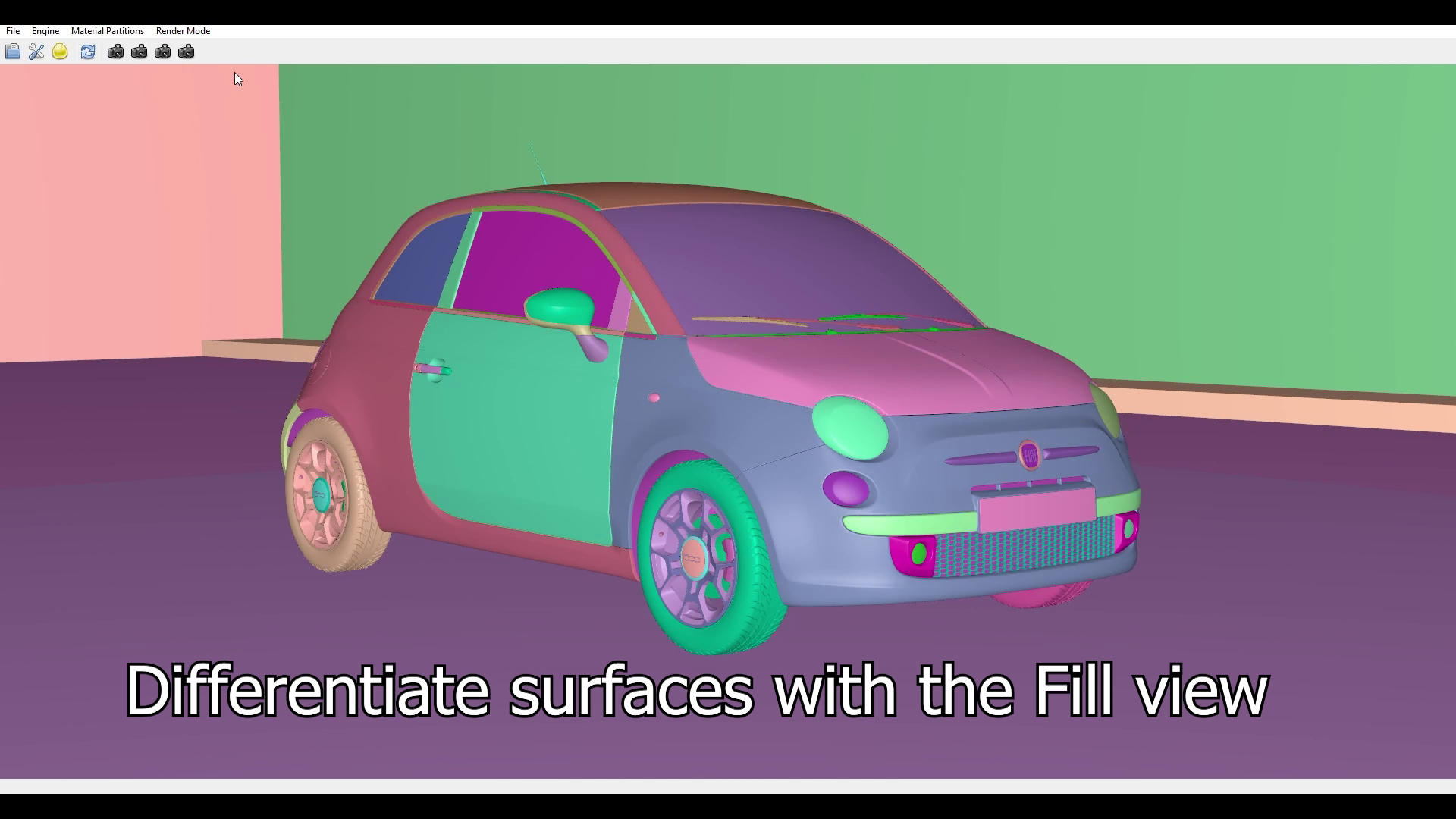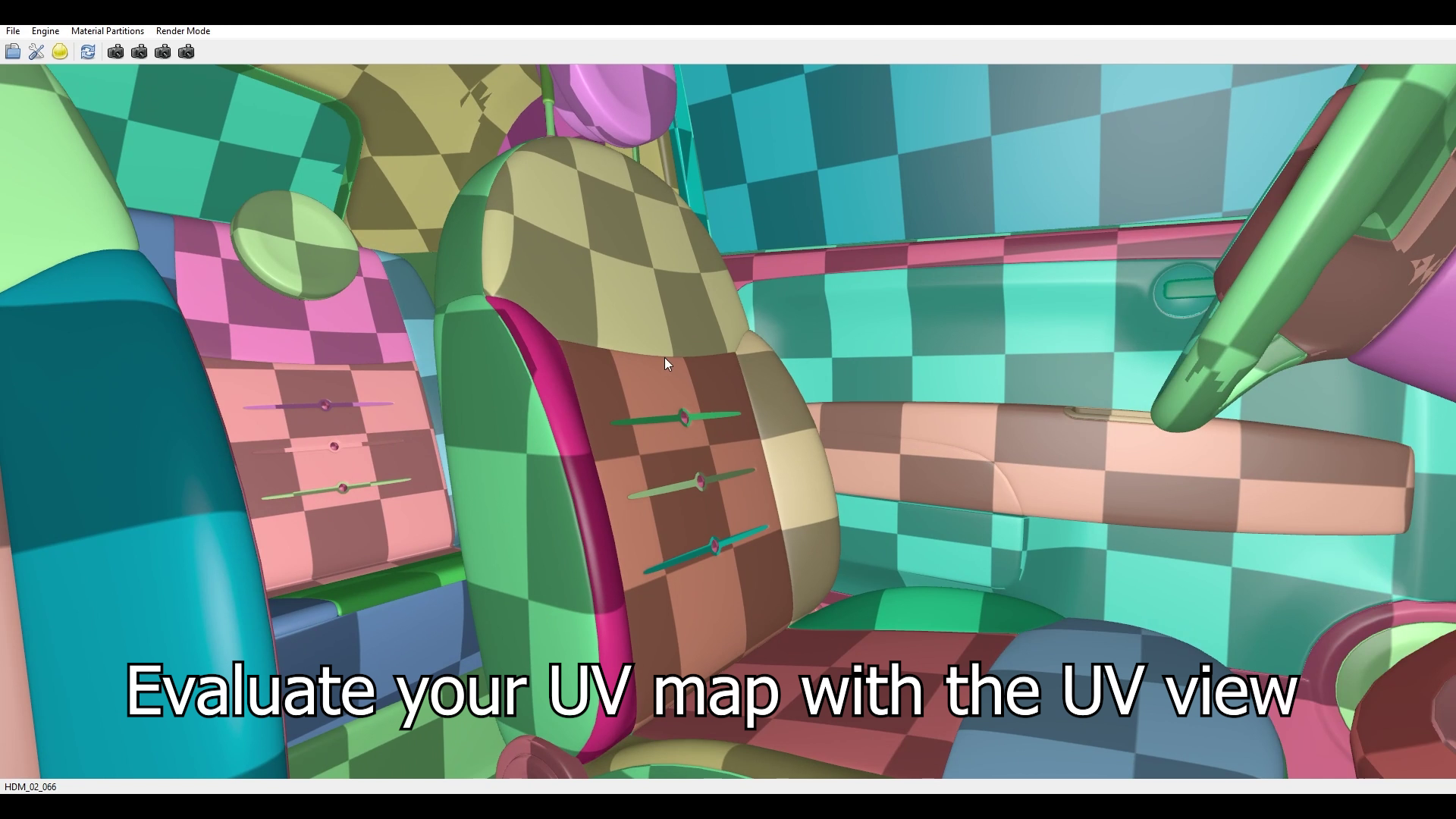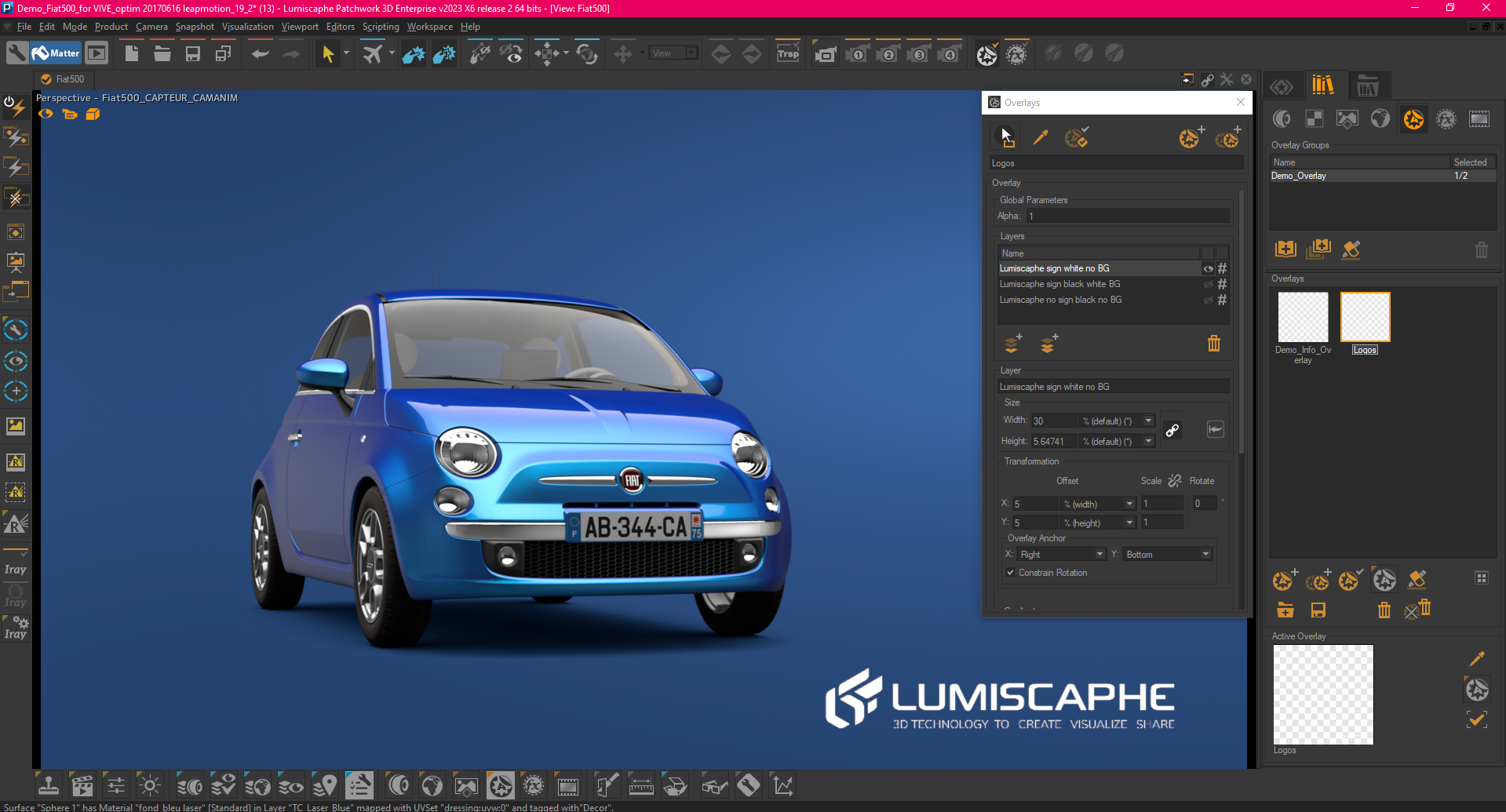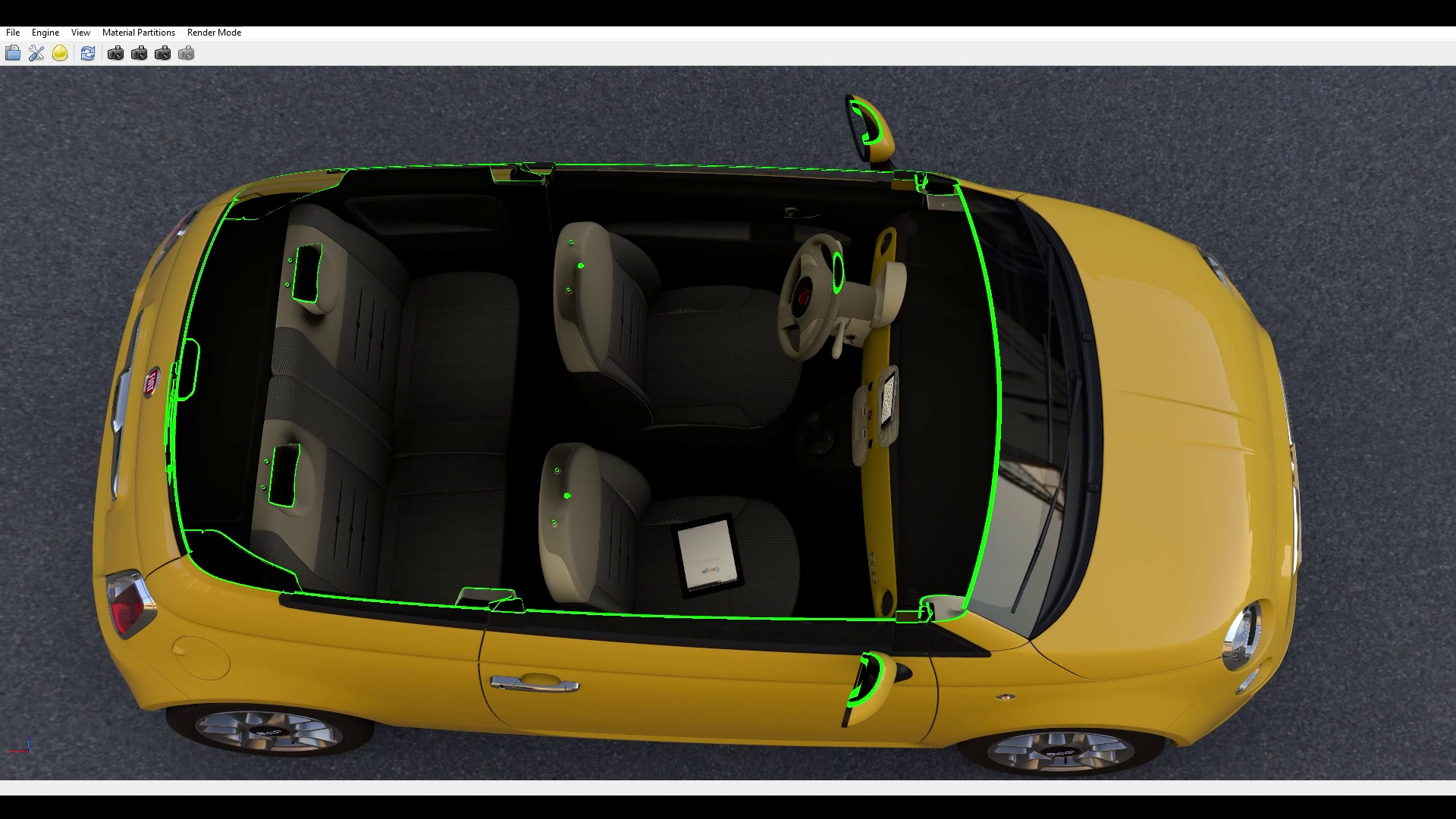We are thrilled to present to you the new development phase of our 3D rendering engine based on Vulkan technology, in episode 11 of our series.
We are not just aiming for a beautiful rendering, but a practical rendering for the authoring phase. When we work on surfaces, such as with the Shaper mode of Patchwork 3D, our goal is to visualize and differentiate each surface clearly. This is the opposite of photorealistic mode, which often seeks to harmonize the appearance of surfaces, even if it means that we no longer perceive the true structure of the object!
We call this aspect the “Fill” rendering mode.

During the authoring phase, to prepare for precise texture placement, we adjust the “UV mapping”, also known as “Dressing” in Patchwork 3D. To evaluate the size and orientation of this UV map, the rendering overlays a colored checkerboard texture on the “Fill” rendering mode, which we call the “UV” rendering mode.

This special checkerboard texture is procedurally generated on the CPU (multi-threaded) at application launch.
We have easily implemented these two rendering modes using Vulkan technology.
Isn’t it cool?

